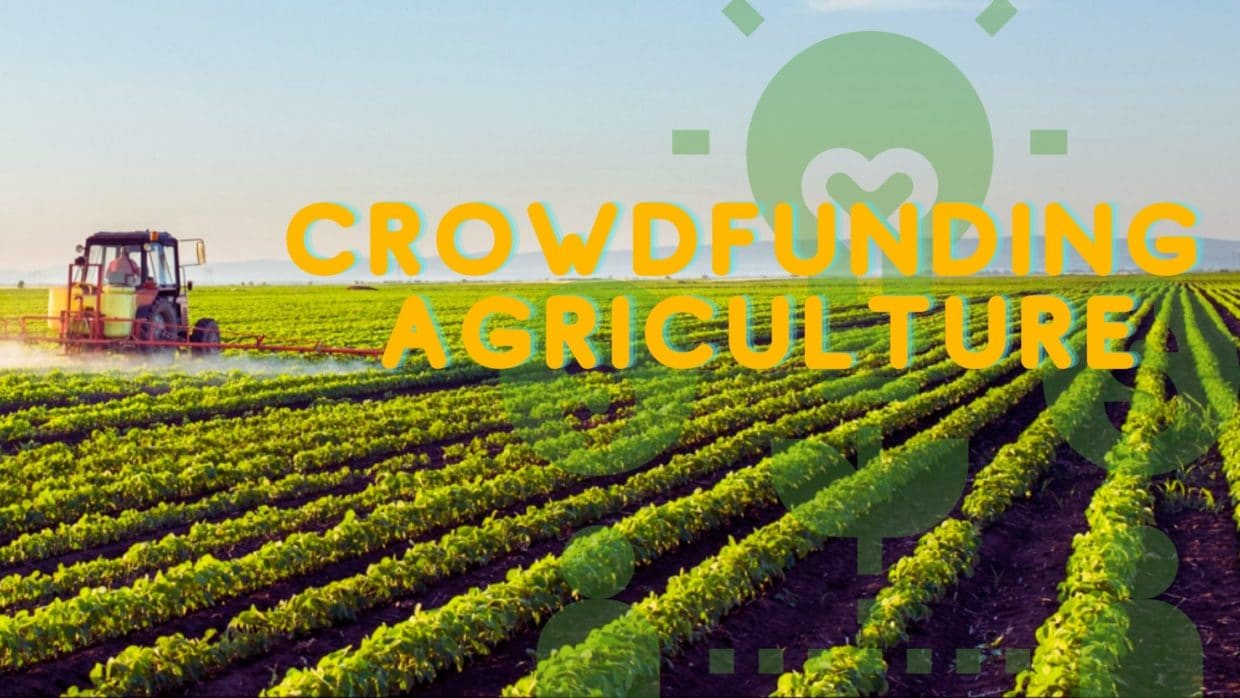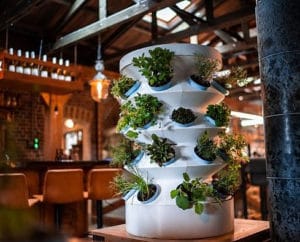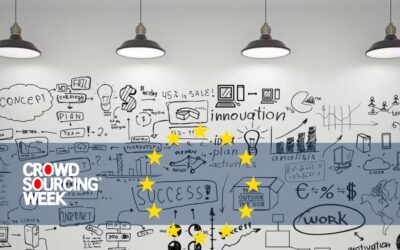The world’s population is expected to have grown by over a third from 2009 to 2050, an additional 2.3 billion people. To feed this number of people, food production will have to increase by around 70% from the 2005/07 levels (source: The World Bank). Meeting this world demand for food is going to need innovation in agriculture: selecting what to grow, how to grow it, learning how yields per acre of land can be raised, and by how much can waste be reduced? Innovation and breakthroughs do not have a past history for banks and other traditional lenders and investors to weigh up the potential risks and returns. Crowdfunding for agriculture will accelerate the innovation in new foodstuffs and agritech required to feed over 9 billion people by 2050.
It’s more than just the number of people
Annual economic growth forecasts for developing countries of around 2.9% will reduce economic poverty substantially. Rising income levels usually drive an increased demand for meat, eggs and dairy. This in turn boosts pressure to grow more corn and soybeans to feed more cattle, pigs and chickens. If too many farmers follow this trend it would still mean shortages of subsistence crops for the poorest people. Food poverty could still exist, and deforestation would reduce biodiversity even further
Other downside factors include:
- an increasing level of foodstuff used for biomass fuels
- methane produced by livestock is a significant contributor to greenhouse gasses
- extreme weather conditions associated with climate change will ruin crops more often
On the plus side:
- hydroponic farming enables more efficient use of resources
- robotics coupled with better data collection will allow greater use of artificial intelligence
- better crop selection, reduced infestations and better-timed harvesting will improve arable efficiency and yield levels
- food waste can be significantly reduced
Types of crowdfunding driving agricultural innovation
There are different types of crowdfunding, all based on the broad principle of getting a little bit of support from a crowd of people, rather than try to get all that’s needed from a single source. Donations crowdfunding is what it says; people donate and expect nothing tangible in return. The satisfaction of having helped a cause or an idea they empathise with is enough.
Reward crowdfunding was originally a way to incentivise donors with a perk – some form of a related benefit: perhaps a product sample; a t-shirt as a thank you; or a mention on a website page. This developed in to commercial reward-based crowdfunding, whereby crowdfunding platforms can be used as virtual sales channels: a “donation” is “rewarded” with a specified product item that can be made on demand. The sums involved can range from very modest projects to some generating over $1m of orders.
 It is common for startup creators of an innovative product to use reward-based crowdfunding to check marketplace traction. On achieving good enough results they move on to equity crowdfunding to set up a solid business. A great example is The Cheeky Panda, which has disrupted the paper tissue market with a plant-based alternative. It began life in 2016 with a reward-based crowdfunding project aiming to generate £10,000 of orders for tissues made from sustainable bamboo, which has three crops a year. After just five years and four rounds of equity crowdfunding, plus VC and institutional investment and phenomenal sales growth, the business is currently valued at £80m. Its founders are reportedly planning an IPO in 2022 at a flotation value of £300m.
It is common for startup creators of an innovative product to use reward-based crowdfunding to check marketplace traction. On achieving good enough results they move on to equity crowdfunding to set up a solid business. A great example is The Cheeky Panda, which has disrupted the paper tissue market with a plant-based alternative. It began life in 2016 with a reward-based crowdfunding project aiming to generate £10,000 of orders for tissues made from sustainable bamboo, which has three crops a year. After just five years and four rounds of equity crowdfunding, plus VC and institutional investment and phenomenal sales growth, the business is currently valued at £80m. Its founders are reportedly planning an IPO in 2022 at a flotation value of £300m.
The UK remains a global leader in equity crowdfunding – which is the raising of investment funds through trading shares in a business via a crowdfunding platform. By comparison, U.S. equity crowdfunding – though performing well – remains complicated by a two-tier system of accredited and non-accredited investors, limits on how much businesses are allowed to raise and individuals can invest, and strict (expensive) legal verification of documents. After a brief trial period in China it does not exist at all. It is prohibited by the financial authorities in India that claim the majority of people need to be protected from both scammers and generic financial investment risks they do not understand.
In peer-to-peer lending, crowds of retail investors make money available to the P2P loan companies, aiming to receive a fixed rate higher return than the retail investment levels generally available to individuals. With fixed repayment dates, it is a more liquid form of investment than taking equity in startup businesses. P2P lenders make the funds available to vetted borrowers. Without having to pay middlemen, shareholders, or finance a legacy infrastructure of bank branches, it means the borrowers can pay lower interest rates. Approval and access to the money is also much faster.
Crowdfunding new foodstuffs
Seaweed is being hailed as a “superfood.” It is increasingly used as a basis for snack products, and for meat-free mince used in sausages and burgers. It can also be used in fabric to make clothing, in cosmetics, and tests show that feeding seaweed to cattle can reduce their methane output by up to 80%. While it is growing, on undersea ropes, it is more effective at removing CO2 from the environment than forests on the land.
Seaweed farming is in its infancy in the UK. Traditional lenders and investors lack a database of past performance against which they can assess the risks and potential returns. The modest sums often sought for early stage developments are not large enough to interest VCs.
UK-based Seagrown reached its reward crowdfunding for agriculture target of £25,000 in August 2021, which will allow it to seed an extra four kilometres of rope. The seeded ropes will be suspended just offshore in the North Sea in October, and Seagrown expect to harvest their crop in summer 2022. The perks for the biggest backers include a boat trip out to the rope lines. This will give Seagrown’s founders a unique opportunity to spend time with them and find out how much they may be prepared to invest if they decide to go ahead with equity crowdfunding. Crowdfunding is good marketing and network building, it can open doors.
In 2019, the US plant-based food company AKUA launched the world’s first kelp burger made from sustainable seaweed. In 2018 they had used reward-based crowdfunding to generate $80,000 of orders for a kelp jerky product via Kickstarter and Indiegogo. Then from early November 2020 to late April 2021, they raised $1,070,000 (the maximum permitted at the time) via the equity crowdfunding platform Republic. This reinforces that progression from reward to equity crowdfunding is now quite a standard path. AKUA’s success, and that of all similar businesses, creates a growing market for seaweed farmers.
An example of crowdfunding for agriculture related to clothing is a young UK entrepreneur, Adam Costello. He grew up near the coast. Time spent clearing plastic waste from the sea and the beaches led to a business plan to make clothing using seaweed fibre, and decorate it with messages about ocean sustainability. He offered the clothing to early backers through Kickstarter. His gross order value was modest, just over £14,000, though it was enough to start his Inland Sea business. This shows how crowdfunding provides an individual with a way to follow their passion and start making a difference, as well as an income.
Crowdfunding hydroponic farming
Also known as vertical farming, crops are grown indoors, in stacked layers, in nutrient-rich water instead of soil. Hydroponic farmers manage and maintain optimal nutrient levels in the liquid solution. It means food can be grown anywhere there is a supply of fresh water and energy for lighting – no soil required! Food can even be grown underground or in surplus office blocks, nearer to population centres in hyper-local supply chains. This reduces the food miles required to put it on to consumers’ plates. It uses far less water per volume of food produced, and no pesticides, making it more sustainable and climate-friendly.
A World Wildlife Fund 2020 report estimates indoor farming will have an annual growth rate of over 24% between 2018 and 2024, hitting $3 billion in revenues worldwide in 2024.
At a startup level, Harvest London is a UK-based hydroponic farming business. It raised over £400,000 in 2019 to grow food to order in the heart of London for restaurants. They are still trading, desite the hospitality shutdown during the Covid pandemic.
Also in London, UK, Square Mile Farms raised over £500,000 through equity crowdfunding in June 2020. They install vertical farms in workplaces, to engage employees in their maintenance and help businesses create a culture of healthy, low-impact living. Early customers included the global property owners and developers Grosvenor Estates and British Land, plus Vodafone. The property owners became active partners through providing access to their commercial tenants.
More recently, another specialty B2B operator, Local Indoor Farming (LIF) in The Netherlands, raised €108,000 in July 2021 through a crowdfunding campaign on the CrowdAboutNow platform. LIF will now manufacture and provide herb towers to hotels and the catering industry so they can grow their own fresh ingredients in a totally controllable manner in limited space.
On a much larger scale, Aerofarms is a US agritech business that began in New Jersey in 2004 and today it has indoor vertical farms across the country. In 2010 it raised an undisclosed amount through equity crowdfunding. They use any available buildings that are large enough, including former factories and nightclubs, and a paintball venue. In 2019 Aerofarms invested $42m in a 150,000 square feet purpose-built facility in Virginia. A recent investor in 2020 was the Abu Dhabi Investment Office (ADIO) that wants to grow food in its desert. In 2021 Aerofarms completed an IPO. They are listed on the NASDAQ exchange and currently valued at $1.2 billion. They claim they grow 400 times more food per unit of land than conventional farming can achieve.
Crowdfunding for agriculture technology, agritech
Drone Ag provides farmers with drones they can fly using software loaded to their mobile phone. Without having to physically be there, they can spray crops, check that crops are growing well, spot infestations, and create images far clearer and more detailed than using satellite-generated ones. This enables better control of pests and soil nutrition, reduces costs and chemical use, and ultimately increases yields and profit. The two business founding brothers were farmers themselves, and through absolutely understanding the challenges that exist today they have created technology that will handle the future. They raised almost £300,000 in 2019 in exchange for approximately 16.6% equity, and then a further £300,000 in 2020 for 10.7% equity.
In the last 12 months, UK-based Small Robot Company has transitioned from prototypes to a commercial service. It uses an autonomous robot and AI software to create a weed map for customers. Fungicides and biopesticides can then be applied with precision to reduce the amounts wasted in places where they are not needed. In August 2021 Small Robot Company raised £4m through equity crowdfunding to manufacture a fleet of robots for its commercial weed mapping service. Two other devices under trial include the world’s first 5G-ready agri-robot for arable farms, and SlugBot is the world’s first robotic monitoring and bio-molluscicide treatment system for slugs.
In Australia, Ewan McAsh is an oyster farmer with 15 years’ experience. He used equity crowdfunding to establish his SmartOysters business that will advise other oyster farmers, commonly operating as family-run businesses, on how to harness new technology to streamline their activities and improve their outcomes. When his crowdfunding closed on June 17 2021 he had raised almost AUS $373,000.
Crover is a new business in Scotland. It makes a robot that burrows down in to cereal crops stored in silos or while it’s in transit at sea. The robot checks non-visible conditions inside the crops: humidity, temperature, presence of any pests, and so on. In August 2021 it raised £337,000 through equity crowdfunding. Crover’s next steps include pilot tests in the UK and Italy as part of the agROBOfood Innovation Experiments throughout March 2022.
Specialist agriculture crowdfunding platforms
FarmFunder is a US equity crowdfunding for agriculture platform. Investors become part owners in farmland and receive annual returns from the crop sales, in addition to eventual returns from the value appreciation of the land itself. Steward is a P2P loan company offering debt crowdfunding to farmers. Investments begin at $100.
Some other US platforms including AcreTrader, Farmland and FarmTogether are restricted to accredited investors and offer minimum investment opportunities of $15,000 to $50,000.
At the other end of the investment level scale, in India, few rural farmers have a banking history and most are refused loans from the traditional sources. RangDe.org began as a public charitable trust, operating as an internet-based P2P micro-lending platform making micro loans to rural entrepreneurs across India. A remarkable aspect was that over 93% of borrowers were women. In 2017, when new legislation was introduced, it transitioned to a regulated peer-to-peer lender, becoming RangDe.in. It took two years to receive full approval by the Reserve Bank of India, the country’s financial regulator, and it began lending money again in September 2019. RangDe.in investors achieve annual returns of up to 9%, paid monthly. They can take their returns out, or leave them in their account to be reinvested. The platform founders make it clear they see their main role as a social business to help farmers, rather than maximise investor returns as their top priority.
Folk2Folk is a UK P2P crowdfunded lender specifically for the farming sector.
Africa has 61% of the world’s unused arable land. Various crowdfunding for agriculture platforms in Africa enable the transfer of money from investors who want to put it to work, to farmers who lack the means to acquire equipment, materials, seed or livestock. Platforms include Farmcrowdy, Farmignite and eFarms in Nigeria; BaySeddo in Senegal; iFarmkonnect is an agritech crowdfunding platform in Kenya; afrifarmcrowd connects investors to chicken farmers in South Africa who have surplus land that could be used for egg production. This is just a selection, there are other African platforms.
It’s clear that many of the agricultural businesses that use crowdfunding are beyond the scope of traditional banking and other finance providers, either because they are too advanced at the leading edge of agritech, or operating in less developed parts of the world and traditional banking simply does not exist there. Crowdfunding for agriculture will accelerate the innovation in new foodstuffs and agritech required to feed over 9 billion people by 2050.
20 categories of BOLD Awards 2022
The BOLD Awards recognise people, projects and businesses that make breakthroughs in twenty categories of digital industries. Agritech businesses are leading the way with innovative uses of robotics and AI, and many are getting started through crowdfunding. Entries to the BOLD Awards can be submitted in up to three different categories under one entry fee.
A round of public voting will give entrants a chance to mobilise their networks and contacts, before the opinions of a panel of international judges are brought in to play to select final winners. The award ceremony will be hosted by Eurpe’s largest accelerator hub, H-FARM, at their campus near Venice, Italy. So what are you waiting for? Check the full 20 categories and submit your entry. You will be able to go back to it and update it.








0 Comments